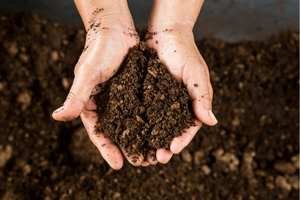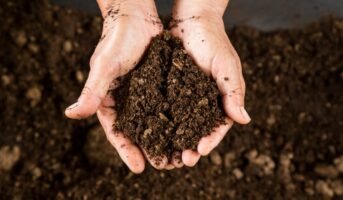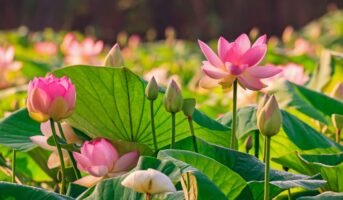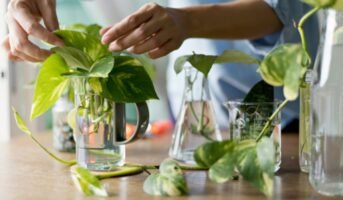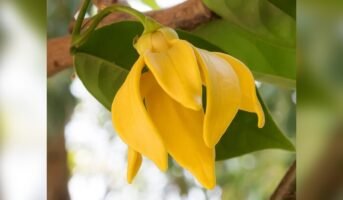Peat moss is a kind of fibrous material that is dark brown and is used as a soil supplement as well as a planting medium to cultivate plants. Harvested from peat bogs, peat moss is a naturally occurring substance that takes one thousand years to produce. It is a fibrous substance that is dark brown and is referred to as “Peat Moss” at any nursery or garden shop.
What is peat moss?
Peat moss is the fibrous, decayed byproduct of mosses and other organic matter decomposition in peat bogs. Peat moss is different from the compost backyard gardeners generate since it is largely made up of moss, and its breakdown takes place in the absence of air, which slows the pace of decomposition.
Peat moss is mostly used by gardeners as a component of potting soil or as a soil supplement. Blueberries and camellias, among other acid-loving plants, thrive in acidic conditions. Plants that like somewhat more alkaline conditions may do well in compost. One application of peat moss may remain for years without being replaced since it doesn’t condense or decompose quickly. In contrast to improperly processed compost, which may include hazardous microbes or weed seeds, peat moss does not.
The majority of potting soils and media used for beginning seeds include peat moss. It may retain water equivalent to several times its weight, which it then gradually distributes to the plant’s roots. It retains soil nutrients so that they aren’t washed away whenever you water your plant. When used alone, peat moss is insufficient as potting soil. Depending on the recipe, it should account for between one-third and two-thirds of the total volume of the mix when combined with other components.
So basically, peat moss is a kind of decayed organic matter often found in cold, wet environments. Cold peatlands in Canada and the northern United States provide the vast majority of the world’s peat moss exports. Peat moss is not a kind of moss but rather a mixture of fibrous material collected from cold-weather wetlands. Peat moss mostly consists of sphagnum moss. Some peat moss sold commercially is a kind of sphagnum moss.
History of peat moss
Peat is formed in waterlogged soils with little or no access to oxygen. This stops the complete decomposition of organic materials and the formation of abundant peat. This would not have been possible before land plants spread widely during and after the Devonian Period, beginning approximately 419.2 million years ago. Canadian peatlands formed over 10,000 years ago in in wetlands such as swamps, muskegs, bogs, fens, and moors.
How to use peat moss?
Peat moss isn’t a great growth medium on its own, which is why it isn’t sold very often as a single item. It is often combined with other compounds in concentrations ranging from one-third to two-thirds of the total. Because of its many benefits, peat moss has been used as a soil supplement for centuries. It softens the soil structure and enhances drainage for clay and heavy soils that tend to compress readily. Soil and peat moss are often mixed at a ratio of 2:1, with the soil making up one part and peat moss the other.
Peat moss is another viable option for soilless cultivation. Peat moss is often mixed with another growth medium like perlite or vermiculite to achieve the desired moisture and aeration levels.
Peat moss is one of the most beneficial materials for beginning seeds since it is so sterile. Seeds are naturally protected from pathogens like bacteria and mould because of their antiseptic properties. It is particularly conducive to germination because of its high drainage capacity, high aeration, fine texture, and low fertility.
Benefits of peat moss
- The weight of plants cultivated in hanging baskets and containers is important to consider. Peat moss is often used as a substitute for stones in the base of planters hung from the ceiling.
- Orchids thrive on peat moss because it provides a moist environment that is also well-drained. When the roots of an orchid plant are soaked in peat moss, the plant flourishes in the home environment.
- Plants of all kinds—those grown inside or outdoors, from flowers to cacti and succulents to vegetables and herbs—need a good potting mix.Powdered peat moss is a common element in many kinds of potting soils. As a soil conditioner, peat moss greatly improves a pot’s ability to retain water. The ability of peat moss to retain water is legendary. Those who cultivate on sandy soil sometimes use it to slow drainage.
- Peat moss is often used in gardening because of its ability to moderate soil acidity. To lower the soil’s pH and make it more suitable for acid-loving plants like blueberries and azaleas, peat moss may be used with regular potting soil.
- In terms of fertility, peat moss is completely inert. This implies that it does not carry any unwanted microbes, diseases, or weed seeds with it when it is delivered.
- Peat moss, in contrast to regular dirt, does not get compacted underfoot. Peat moss’s spongy texture is well suited for use as topsoil.
Peat moss: Drawbacks
- Peat moss is deficient in nutrients compared to other organic materials like manure compost. Also, it doesn’t have any good bacteria in it.
- The lengthy time it takes for peat moss to grow makes it practically a non-renewable resource. Carbon dioxide is released into the air, and the route is cleared for methane to be released when peat moss is harvested. Greenhouse gases like methane and carbon dioxide are well-documented contributors to the warming trend.
- The cost of peat moss is much higher than that of regular soil.
Peat moss: Alternatives
Some kinds of plants and frogs are found only in peat bogs and mires, thus the process of scraping or collecting this product is being closely examined to ensure it doesn’t negatively impact these organisms. Removal of peat acreage not only disrupts the lives of these organisms but also reduces the number of vital gases and minerals produced. Due to the lengthy regeneration time of peat bogs, it is worthwhile to weigh the merits of the following choices.
Compost
Soil density and drainage may be improved with the addition of compost. Making compost properly takes weeks or even months, and you don’t always have that kind of time on your hands. It is composed of dead and decaying plant and animal matter. It has high nutritional content and is good at retaining water.
Wood fibre
You may be able to aerate the soil directly using various natural elements in addition to completely decomposed compost. Fallen leaves, after being dried, may be mulched or composted to improve soil quality. Chipped wood might have the same effect.
Coconut coir
Coir is made from coconut fibre and is a sustainable by-product. It is becoming more common to utilise coir instead of peat moss in soilless potting mixes. It’s more costly than peat moss, but it has a neutral pH, holds more water, and improves soil aeration. Once again, coco coir was similar to peat moss in that it had excellent water retention and high porosity.
Peat moss versus sphagnum moss
Live plant material known as sphagnum moss may be seen growing above peat moss layers, however, this should not be mistaken for the degraded layers of peat moss that are thousands of years old.
Although many other substances may be used to create peat, sphagnum moss accounts for the vast majority of the peat that is collected. This is how peat moss got its name. Sphagnum moss is a kind of plant that thrives on the topsoil or peat atop a marsh or other wetland.
Weather conditions of cold and dampness are ideal for its growth. Old components gradually settle to the base as time passes.
Decomposition moves at a snail’s pace in the oxygen-free zone. However, it takes many thousands of years for the dead, uniform substance known as peat moss to accumulate into a thick covering.
FAQs
How long is peat moss good for?
It lasts several years.
How long does it take for peat moss to break down?
Peat moss speeds up the composting process, reduces odours, and controls air and water in the compost pile. Peat moss decomposes slowly over several years compared to compost which typically decomposes within one year.
What will happen with too much peat?
The excess peat will take up space from the compost/nutrients. Adding compost without removing the peat will spill over the boxes before it gets to the correct amount.
Housing News Desk is the news desk of leading online real estate portal, Housing.com. Housing News Desk focuses on a variety of topics such as real estate laws, taxes, current news, property trends, home loans, rentals, décor, green homes, home improvement, etc. The main objective of the news desk, is to cover the real estate sector from the perspective of providing information that is useful to the end-user.
Facebook: https://www.facebook.com/housing.com/
Twitter: https://twitter.com/Housing
Email: [email protected]
